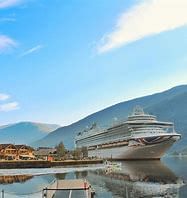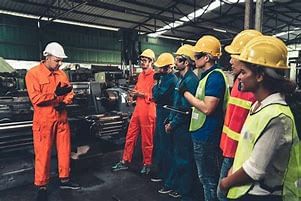UPSC Daily Current Affairs- 21st May 2024 | Current Affairs & Hindu Analysis: Daily, Weekly & Monthly PDF Download
GS-I/Geography
KYRGYZSTAN
Source: Indian Express
 Why in News?
Why in News?
The government on Saturday urged Indian citizens in Kyrgyzstan to stay indoors amid reports of attacks on foreign students and protests by local residents in Bishkek on Friday night over concerns about "growing numbers of migrants from Pakistan, Bangladesh, India, Egypt and other countries".
Background
- Around 15,000 Indian students are estimated to be in Kyrgyzstan, mostly enrolled in medical colleges and universities.
About KYRGYZSTAN
- Kyrgyzstan, officially the Kyrgyz Republic, is a landlocked country in Central Asia, lying in the Tian Shan and Pamir mountain ranges.
- Bishkek is the capital and largest city of the country.
- Kyrgyzstan is bordered by Kazakhstan to the north, Uzbekistan to the west, Tajikistan to the south, and China to the east and southeast.
- Ethnic Kyrgyz make up the majority of the country's 7 million people, followed by significant minorities of Uzbeks and Russians.
- On 31 August 1991, Kyrgyzstan declared independence from the USSR and a democratic government was established.
- Kyrgyzstan attained sovereignty as a nation state after the breakup of the Soviet Union in 1991.
- After independence, Kyrgyzstan was officially a unitary presidential republic; after the Tulip Revolution it became a unitary parliamentary republic, although it gradually developed an executive president and was governed as a semi-presidential republic before reverting to a presidential system in 2021.
- Kyrgyzstan is a member of various international organizations including the Commonwealth of Independent States, the Eurasian Economic Union, the Collective Security Treaty Organization, the Shanghai Cooperation Organisation, the Organisation of Islamic Cooperation, the Organization for Security and Cooperation in Europe, the Organisation of Turkic States, and the United Nations.
- It is a developing country and is the second poorest country in Central Asia after neighbouring Tajikistan.
- The country's transitional economy is heavily dependent on deposits of gold, coal, and uranium.
Port of Call

Why in News?
Recently, Spain has denied entry to an Israel-bound vessel carrying weaponry at the southeastern port of Cartagena.
- It serves as a temporary stop for a ship during its scheduled voyage for cargo handling or transporting provisions and fuel. This port is distinct from the ship's home port.
- Originally, these ports evolved as stopping points on major sea routes where vessels anchored for refueling, restocking supplies, and obtaining food items. Subsequently, they evolved into commercial hubs.
- Examples include Aden, Honolulu, and Singapore, showcasing this evolution.
- While termed a port of refuge, a port of call is typically not a fixed segment of a ship's route. The vessel may make a stopover at this intermediate port due to various reasons such as:
- Cargo operations like cleaning, repairs, or maintenance.
- Replenishing supplies such as fuel and food.
- Loading and unloading cargo.
- Responding to unforeseen emergencies.
- Based on the purpose of the halt, a port of call can be categorized further, for instance:
- Dry harbor (for vessel maintenance).
- Cargo harbor (for cargo handling).
- Fish harbor (for fish-related activities).
GS-II/International Relations
Radical Democracy in Contemporary Context
Source: The Hindu

Why in News?
The ongoing socio-political and economic crises highlight the need for societal reorganization.
Foundational Principles
- Freedom and Justice Reconciliation: Manabendra Nath Roy and his associates proposed a theory reconciling freedom with justice as a response to the shortcomings of liberal democracy and modern dictatorship.
- Highlighted Crises:
- Issues in 19th Century Liberal Democracy and Capitalist Exploitation.
- Deterioration of Communism and the Emergence of Fascism.
- Impacts of World Wars and Global Conflict.
Significance of Radical Democratic Processes
- Empowerment of Citizens: Radical democracy stresses citizen empowerment beyond voting, emphasizing elevating individuals' dignity and enabling active engagement in decision-making.
- Critique of Traditional Democracy: Challenges the constraints of traditional liberal democracy, pointing out how parliamentary systems may lead to demagoguery and the erosion of civil liberties, particularly for the economically disadvantaged.
- Decentralization and Local Involvement: Advocates for the delegation of legislative power to local councils, fostering direct participation and accountability at the grassroots level for a more inclusive and responsive democratic process.
- Protection Against Authoritarianism: Aims to shield against authoritarianism and dictatorship by dispersing power, preventing the monopolization of representation by political entities or charismatic leaders, thereby nurturing a more diverse and accountable political environment.
- Enhancement of Democratic Culture: Fosters a dynamic democratic culture extending beyond institutional frameworks, stressing citizen empowerment through critical thinking, participative politics, and nurturing a public ethos that values democratic principles and practices.
Humanist Economy in Radical Democracy
- Economic Critique: Manabendra Nath Roy criticizes both capitalist and nationalized economies for their centralization and neglect of human needs.
- Key Economic Tenets:
- Modernizing agriculture through enhanced irrigation, fertility enhancement, and infrastructure development, promoting cooperative rural economic structures.
- Emphasis on social security, unemployment insurance, old age pensions, and improvements in health, housing, and education.
- Promoting a balanced industrialization approach that addresses immediate requirements and fosters social and economic equity, cautioning against rapid industrialization benefiting only a select few.
Importance of Radical Democracy
- Attainment of True Freedom and Social Justice: Roy contends that radical democracy is pivotal for realizing genuine freedom and social justice, positing democracy as a byproduct of civilization feasible only in advanced societies that acknowledge the interdependence of individual freedom with that of others.
- Prevention of Totalitarianism: Roy emphasizes that economic deprivation and social subjugation pave the path for totalitarianism. To avert this, democracy must be rooted in individual creativity, rationality, and collective endeavors to reshape society.
- Humanism and Moral Radicalism: Advocates for a philosophy grounded in humanism and moral radicalism, asserting human agency in shaping their world and stressing the necessity for a rational, scientific approach to societal progress.
Concluding Thoughts
- Essence of Radical Democracy: Rooted in humanism and moral radicalism, radical democracy stands as a cornerstone for genuine freedom and social justice, necessitating a rational, creative, and collective endeavor to transform society and preclude totalitarianism.
GS-II/International Relations
Death of Iranian President Ebrahim Raisi
Source: International Relations
Why in News?
Iran's President Ebrahim Raisi, along with the country's foreign minister and several other officials, were discovered dead following a helicopter crash in Iran's northwest.
- Iran's Supreme Leader Ayatollah Ali Khamenei announced that First Vice President Mohammad Mokhber would assume the role of interim president.
Authority of the President in Iran
- Role of President: The President of Iran operates under the authority of the Supreme Leader but remains a significant figure in the country's political framework.
- Responsibilities: The President acts as a mediator between the legislature and the executive branches, appoints ministers and vice presidents, and plays a pivotal role in making crucial foreign policy decisions.
- JCPOA Negotiations: During the negotiations of the Joint Comprehensive Plan of Action (JCPOA), the Iranian President, at that time Hassan Rouhani, held substantial authority.
- Limitations: The President's authority is only surpassed in case of a conflict with the Supreme Leader.
Major Achievements of Ibrahim Raisi as President
- Iran-Saudi Deal: Raisi brokered a deal with Saudi Arabia facilitated by China.
- 'Axis of Resistance': Raisi heightened the concept of an 'Axis of Resistance', an informal coalition led by Iran involving various regional entities.
Ramifications of Raisi's Death in Iran
- Conservatives Vs. Reformists: The political landscape in Iran has traditionally been characterized by a struggle between conservatives and reformists with differing ideologies and visions for the country.
- Increased Tension: Raisi's demise is likely to intensify the ongoing power struggle between these two factions.
On Succession
- Constitutional Provisions: As per Iran's Constitution, the First Vice President assumes the role of President in the event of the President's death or incapacity.
- First Vice President Mohammad Mokhber: Mokhber, appointed by Raisi in August 2021, will serve as President until a new election is held within the next 50 days.
India's Concern
- Strategic Relations: India closely monitors developments in Iran due to its geopolitical significance in the region.
- Stability: The assessment in Delhi suggests that despite Raisi's death, political stability in Iran is expected to be maintained under the leadership of Ali Khamenei.
Iran's Response After President's Death
- International Impact: The geopolitical repercussions of Raisi's death extend beyond Iran, with countries like India observing the aftermath closely.
- Regional Dynamics: Iran's actions post-Raisi's death, especially in light of recent conflicts, will be closely watched by nations like India due to their strategic alliances.
GS-III/Environment and Ecology
10th World Water Forum
Source: Global Times
Why in News?
The World Bank presented a report titled "Water for Shared Prosperity" during the 10th World Water Forum in Bali, Indonesia.
- This report highlights the growing gap in water access due to factors like population growth, urbanization, and climate change.
Key Points from the Report
- In 2022, 2.2 billion individuals lacked access to safe drinking water, and 3.5 billion lacked access to safe sanitation services.
- More than 800 million people globally are highly vulnerable to drought, with twice that number residing in flood-prone regions.
- Low-income countries have experienced a decline in access to safe drinking water, with an additional 197 million people lacking access since 2000.
- Disparities in rural-urban water access in low-income nations have remained largely stagnant over the past two decades.
- Regions such as the Sahel, Southeastern Africa, and South and Central Asia face severe water stress.
- The Democratic Republic of the Congo possesses over half of Africa's total water resources.
About the World Water Forum
- The World Water Forum is a significant global event dedicated to addressing and resolving worldwide water challenges.
- This event is held every three years, with the inaugural forum occurring in Marrakesh, Morocco, in March 1997.
- Organized by the World Water Council, the forum brings together stakeholders from diverse sectors to raise awareness, foster political commitment, and prompt action on critical water issues.
World Water Council (WWC)
- Establishment and Objectives
- The World Water Council was established in 1996 following deliberations at the International Water and Sanitation Congress & Exhibition in 1994.
- It aims to heighten awareness about pivotal water concerns at all levels, facilitating the effective conservation, management, and utilization of global water resources.
- Membership and Activities
- The WWC comprises over 300 member organizations in around 50 countries, encompassing esteemed water experts and various international entities.
- The Council concentrates on targets associated with Sustainable Development Goal 6 (Clean Water and Sanitation), among other initiatives.
- Key Functions
- World Water Forums: The Council hosts the largest water-related event globally, bringing together stakeholders to collaborate on water challenges.
- Policy Influence: By fostering discussions among policymakers, the WWC endeavors to impact water-related policies.
- Research and Advocacy: Through publications and strategic projects, the WWC enhances understanding and awareness of water issues.
GS-III/Environment and Ecology
 |
Download the notes
UPSC Daily Current Affairs- 21st May 2024
|
Download as PDF |
Malaria Vaccine Shipment to Africa
Source: Hindustan Times

Why in News?
Serum Institute of India (SII) has sent out its first batch of malaria vaccines, R21/Matrix-M, to Africa.
- Africa faces a significant malaria burden, with close to half-a-million annual child deaths due to the disease.
Malaria Overview
- Malaria is a severe febrile illness caused by Plasmodium parasites transmitted through infected mosquitoes.
- It primarily affects tropical regions and is both preventable and curable.
Transmission and Symptoms
- Malaria spreads through the bites of female Anopheles mosquitoes and is not contagious between humans.
- Symptoms typically include fever, headache, and chills, often manifesting within 10-15 days after infection.
Prevention Methods
- Key prevention strategies include vector control through nets and indoor spraying.
- Additionally, chemopreventive therapies can be used for both treatment and prevention.
R21/Matrix-M Vaccine Details
- The R21 vaccine is the second malaria vaccine endorsed by the WHO, with high efficacy and safety standards.
- Developed by the University of Oxford, the vaccine utilizes Novavax's adjuvant technology for enhanced immune response.
Features and Impact
- The R21 vaccine demonstrates high efficacy before malaria transmission peaks and is cost-effective.
- Initial shipments of the vaccine are earmarked for the Central African Republic, followed by other nations.
GS-III/Environment and Ecology
Critical Tiger Habitat
Source: Indian Express
Why in News?
Recently, the Supreme Court has instructed the Rajasthan government to close down 68 mines situated within a 1-kilometre radius of the critical tiger habitat (CTH) of the Sariska reserve.
About Critical Tiger Habitat (CTH):
- These areas, also known as core areas of tiger reserves, are designated under the Wild Life Protection Act (WLPA), 1972.
- Scientific evidence supports the need to preserve these areas exclusively for tiger conservation, while safeguarding the rights of Scheduled Tribes and other forest residents.
- The state government, in collaboration with an expert committee, is responsible for declaring CTH notifications.
Key Facts about Sariska Tiger Reserve
- Location: Situated in the Alwar district of Rajasthan, nestled within the Aravali Hills.
- Noteworthy Achievements: The first reserve globally to successfully relocate tigers.
- Attractions: Known for ancient temples, palaces, and scenic lakes including Pandu Pol, Bhangarh Fort, Ajabgarh, Pratapgarh, Siliserh Lake, and Jai Samand Lake.
- Topography: Encompasses a rocky terrain, scrub thorn arid forests, grasslands, hilly cliffs, and semi-deciduous woodlands.
- Vegetation: Features Northern Tropical Dry Deciduous Forests and Northern Tropical Thorn Forest types.
- Plant Life: Includes Dhok trees, salar, kadaya, gol, ber, Banyan, gugal, bamboo, kair, adusta, among others.
- Wildlife: Diverse wildlife such as leopards, sambars, chitals, nilgais, and various other species.
GS-III/Economy
Key Role of Worker Housing in India's Manufacturing Sector
Source: Indian Express

Why in News?
India targets a $10 trillion economy by 2035, aiming to boost the manufacturing sector's GDP share from 15% to 25%.
- This growth plan necessitates a four-fold increase in manufacturing output to enhance job creation.
Current Challenges Faced:
- Inadequate Infrastructure: Many factories lack the essential infrastructure, especially in terms of worker housing.
- Land Regulations: Existing regulations do not consider worker accommodation, requiring state-level policy adjustments.
- Commute and Productivity: Long commutes lead to exhaustion and decreased productivity.
- Living Conditions: Ad hoc accommodations lead to an unstable and unproductive workforce.
- Skill Gaps: Targeted skill development programs are needed for improved productivity and adaptability.
- Lack of Coordinated Policy: Enhanced coordination between state and central governments is necessary for optimal support.
- Economic Benefits of Worker Housing:
- Transport Savings: Providing on-site housing reduces transportation costs significantly.
- Enhanced Productivity: Improved living conditions lead to higher productivity levels.
- Reduced Attrition: Better conditions decrease workforce turnover rates.
- Training Facilities: On-site housing facilitates better training opportunities for workers.
- Environmental Impact: Reduced commutes contribute to lower carbon footprints.
- Proposed Strategies for Implementation:
- Tax and Fiscal Incentives: Government support through tax breaks and financial benefits can encourage investment in worker housing.
- Priority Sector Tagging: Designating worker housing as a priority sector for financing can attract more investments.
- Collaborative Financing: Utilizing resources like the National Investment and Infrastructure Fund (NIIF) can boost infrastructure development in this area.
|
39 videos|4566 docs|979 tests
|
FAQs on UPSC Daily Current Affairs- 21st May 2024 - Current Affairs & Hindu Analysis: Daily, Weekly & Monthly
| 1. What is the significance of the Port of Call in the context of international trade and maritime activities? |  |
| 2. How does Radical Democracy manifest in contemporary political systems around the world? |  |
| 3. What impact does the death of Iranian President Ebrahim Raisi have on the political landscape of Iran and the region? |  |
| 4. How does the 10th World Water Forum address global water challenges and promote sustainable water management practices? |  |
| 5. Why is the protection of Critical Tiger Habitat important for biodiversity conservation and ecosystem health? |  |


























